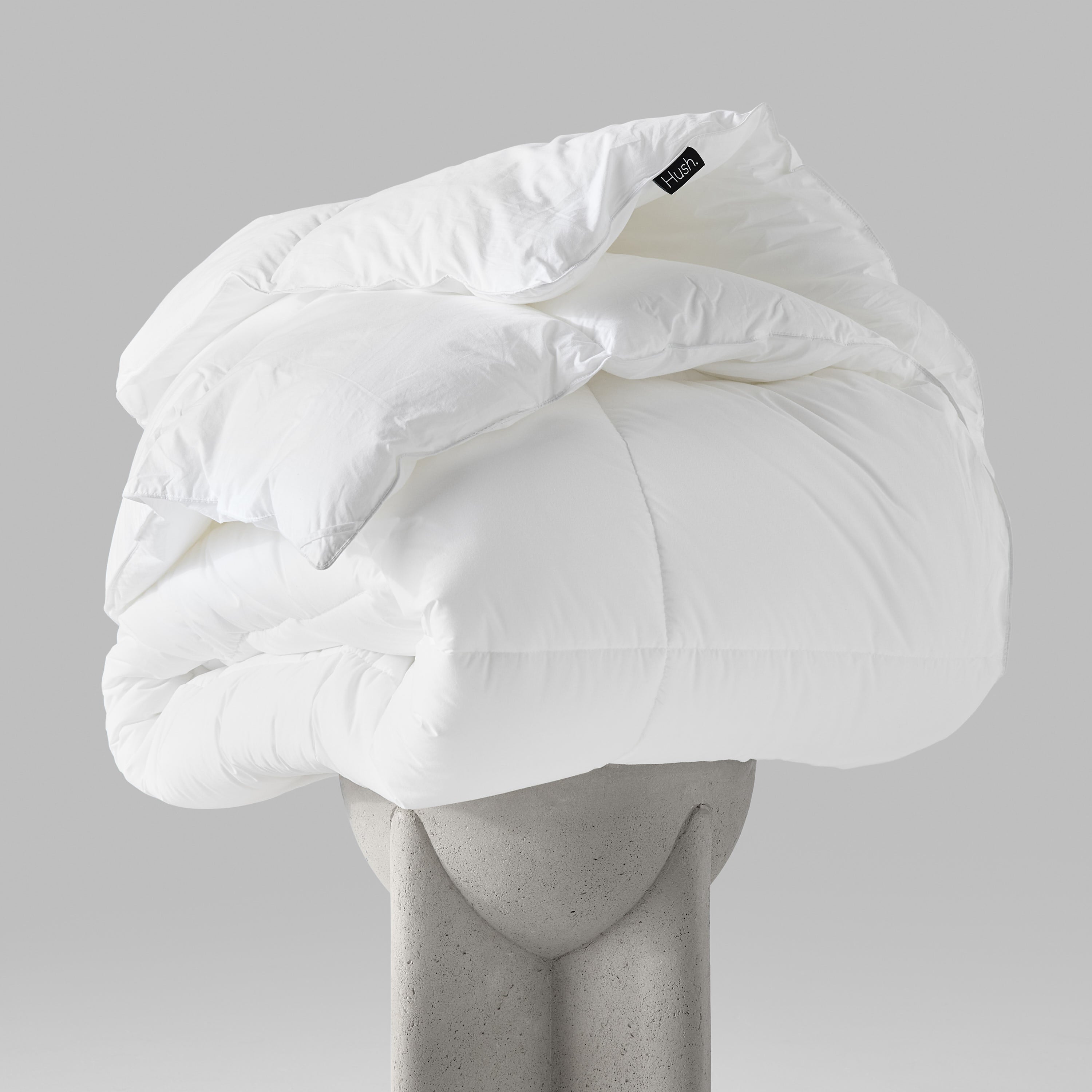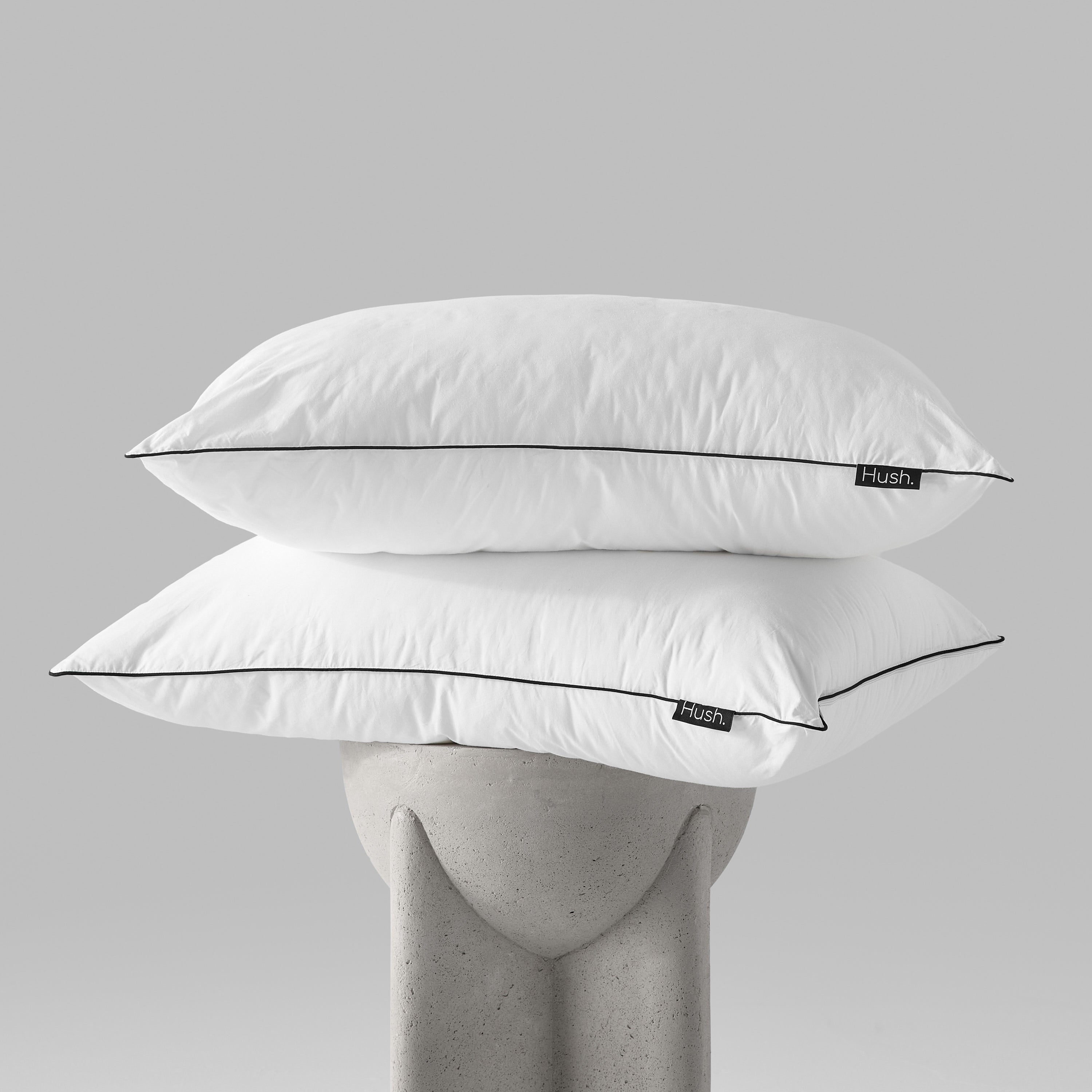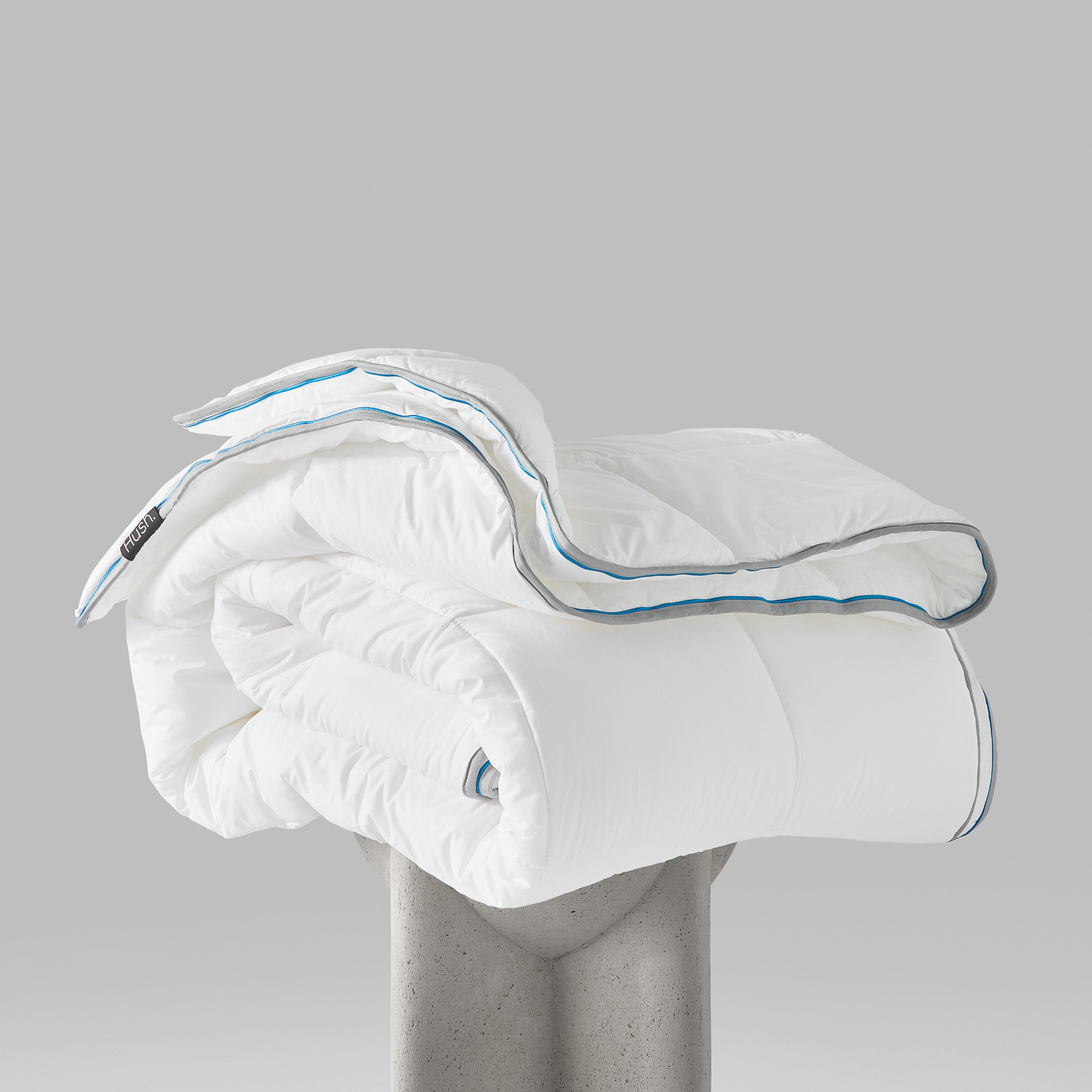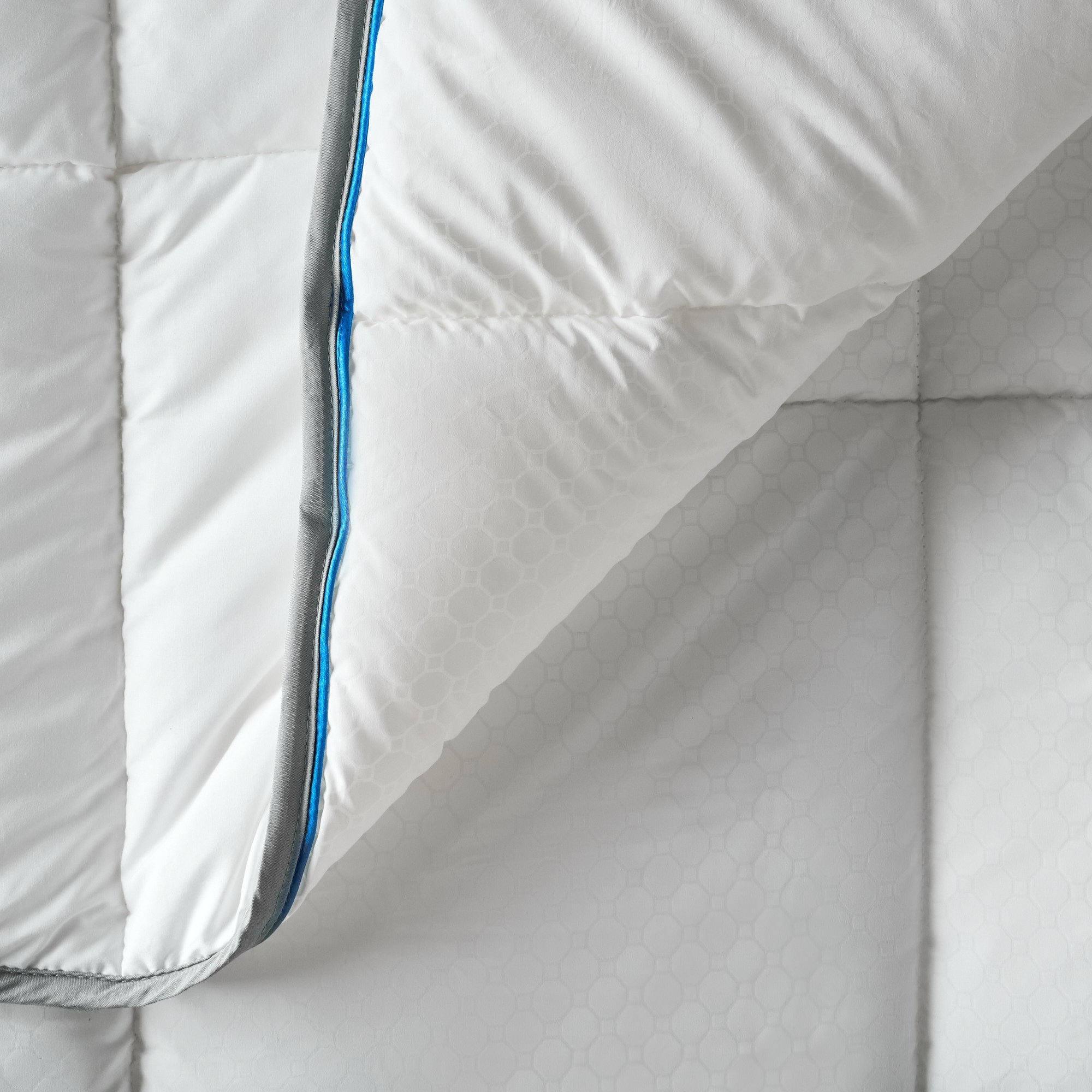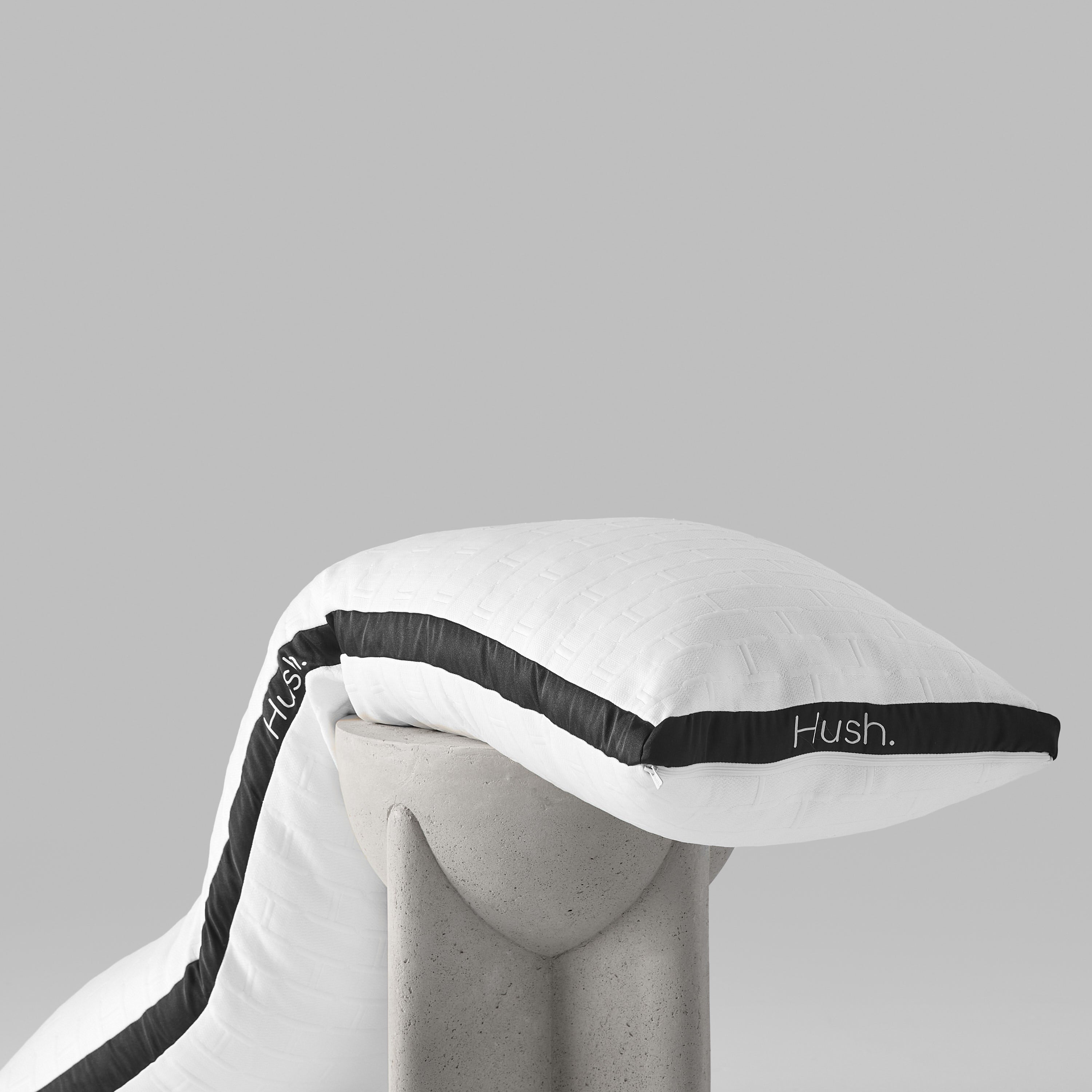Fibromyalgia may not be as well-known as other chronic diseases such as arthritis or diabetes, but it nevertheless affects 10 million people in the US (and even more worldwide).
Are you suffering from fibromyalgia? Or have a loved one who suffers from this condition? You’re in the right place.
In this blog post, we walk you through how to ease the pain that fibromyalgia brings about, and how to use a weighted blanket to reduce your symptoms.
What Is Fibromyalgia?
Before we delve into how to treat or mitigate the symptoms of fibromyalgia, let’s first take a closer look at what this condition actually entails.
In a nutshell, fibromyalgia is defined as “a rheumatic condition characterized by muscular or musculoskeletal pain with stiffness and localized tenderness at specific points on the body.”

Now, while fibromyalgia SOUNDS like arthritis and joint inflammation, it’s actually in a different category altogether.
More specifically, fibromyalgia is a rheumatic condition, which means that it causes soft tissue pain or myofascial pain instead of joint/muscle damage.
According to statistics, fibromyalgia affects 7 times as many women as men.
We also know that middle-aged folk between 30 and 50 years old are most likely to develop fibromyalgia. That said, the condition can occur in people of any age.
Symptoms of Fibromyalgia
Common symptoms of fibromyalgia include:
- Headaches
- Widespread pain
- Pain in the jaw and face muscles
- Dry mouth, nose and eyes
- Gastrointestinal problems
- Sensitivity to hot and cold
- Frequent urination
- Numbness or tingling in hands and feet
- Restless leg syndrome
- Mental health problems, including anxiety and depression

On top of this, it’s common for patients with fibromyalgia to experience fatigue. Many of these patients suffer from insomnia and chronic tiredness.
Causes and Diagnosis of Fibromyalgia
As of now, scientists are still uncertain about exactly what causes fibromyalgia. Here’s what we DO know, though...
A few years back, researchers from Karolinska Institutet in Sweden found that patients with fibromyalgia have elevated levels of cytokines (inflammatory substances) in their cerebrospinal fluid, meaning that their central nervous systems were likely to be inflamed.
Unfortunately, the source of the inflammation hasn’t been determined yet.
That said, the risk factors for fibromyalgia include traumatic injury, rheumatoid arthritis and other autoimmune disorders.
If you or a loved one are suffering from one of these conditions, then this increases the likelihood that you’re also experiencing (or will go on to experience) fibromyalgia.

Now, when it comes to the diagnosis of fibromyalgia, things aren’t as straightforward as we might hope.
Because we haven’t identified the root cause of fibromyalgia, there’s no one test that doctors can use to diagnose the condition.
Instead, they’ll have to use a process of elimination to rule out other conditions, combined with a two-part scoring system that aims to measure the intensity of the pain.
How does this work? Basically, the doctor will ask the patient a series of question in order to determine how widespread their pain is, and how much their pain affects their daily lives.
If the pain does take a toll on the patient’s daily activities, or if a patient feels pain at 11 or more of the 18 identified fibromyalgia pain points, then the doctor may diagnose them as having the disease.
All in all, 70% of people with fibromyalgia remain undiagnosed; on average, it takes five years from when symptoms manifest for patients to receive a proper diagnosis.
How to Manage Fibromyalgia
The bad news? Because fibromyalgia is a chronic pain condition, it has no known cure.
The good news? There are ways of managing and easing the symptoms of fibromyalgia, and it’s possible for those with fibromyalgia to reduce their pain and discomfort.

Now, exactly how you should go about managing your fibromyalgia depends on your specific set of symptoms, but popular methods include:
- Exercising
- Acupuncture
- Psychotherapy
- Behavior Modification Therapy
- Chiropractic care
- Massage therapy
- Physical therapy
If you’re wondering if there are any pharmaceuticals that you can take to manage the symptoms of fibromyalgia, the answer is yes.
That said, if you ask your doctor about taking these drugs, they’ll probably tell you that you might experience mixed results with them.

You can read up and look at forums and blogs online, but from what we see, the side effects of fibromyalgia drugs often make taking these drugs counter-productive.
For instance, an antidepressant that’s commonly prescribed for those with fibromyalgia is Cymbalta(Duloxetine). This drug’s side effects include:
- Nausea
- Dry mouth
- Constipation
- Loss of appetite
- Tiredness and drowsiness
- Increased sweating
- Dizziness and lightheadedness
For those who find that using pharmaceuticals is doing more harm than good, consider managing your condition using natural, drug-free treatment methods.
Using a Weighted Blanket For Fibromyalgia
If this is the first time you’re hearing about weighted blankets, these are basically blankets that are weighed down by stuffers that make them heavy.
Back in the day, therapists used these blankets to soothe their patients who had anxiety or were on the autism spectrum.
With the blankets becoming increasingly popular, however, consumers have taken to purchasing these blankets for their own use, and rely on these blankets to reduce their insomnia and push down their stress levels.
Now, how do you go about using a weighted blanket for fibromyalgia?
It’s fairly simple — just snuggle up under your weighted blanket when you’re heading to bed (or even when you have a spare moment in the day), and it’ll do you a world of good.
If you’re wondering about the science behind it all, here’s how it works:
Weighted blankets provide a firm, deep pressure stimulation that’s known as Deep Touch Pressure Therapy (DTP); this is the same simulation that you get during a massage.
When you receive this stimulation, it triggers the release of neurotransmitters including:
- Serotonin
- Dopamine, and
- Oxytocin
This helps to alleviate the symptoms of fibromyalgia both directly and indirectly. Here, we’ll break it down for you...
How weighted blankets help to alleviate fibromyalgia symptoms
First and foremost, research shows that people with fibromyalgia may have low levels of serotonin.
Running in the same vein, there are studies which show that using a weighted blanket to apply gentle pressure on patients helps to boost their serotonin levels.
Now, serotonin plays a huge impact on your sleep cycle. This neurotransmitter helps you wake up feeling refreshed — so if you don’t have enough of it, you’ll wake up groggy and tired, even with eight hours of sleep.

So, to connect the dots:
Using a weighted blanket = ↑ serotonin = ↓ fibromyalgia symptoms.
Pretty straightforward, right?
On top of that, there are other indirect ways in which weighted blankets can help with fibromyalgia.
For instance, using a weighted blanket can result in:
- Less anxiety
- Less pain
- Improved mood
First up, weighted blankets are actually an evolution of squeeze machines, which were invented to help autism patients deal with anxiety and stress.
This goes back to the idea of Deep Pressure Therapy, which helps reduce stress and anxiety (among other things).
If you’d like to read up, here’s a study that shows how adults who used weighted blankets felt calmer and less anxious.
Next, using a weighted blanket can also help you reduce pain brought about by fibromyalgia.
You can find plenty of positive blog posts by actual fibromyalgia patients online:
“For years I’ve heard anecdotal stories about how weighted blankets have helped improve fibromyalgia symptoms, but I’d put off purchasing one because I wasn’t sure it would be worth the price. After years of wanting a weighted blanket I finally got one, and I wasn’t disappointed.”
Review from Julie of CountingMySpoons.
And be sure to check out the comments, where readers chime in with their own experiences:
Last but not least, weighted blankets are great for improving your mood as well. This helps to counter the depression that some fibromyalgia patients grapple with.
How does this work?
As mentioned earlier, using a weighted blanket stimulates the release of neurotransmitters.
We’ve already talked about what the neurotransmitter serotonin does, but how about dopamine and oxytocin?
Well, dopamine contributes to feelings of pleasures and satisfaction as part of the reward system, and it’s essential for our well-being.

Then there’s oxytocin, which is known as the “love hormone”. This neurotransmitter does a wide range of things, including:
- Modulating fear and anxiety
- Producing antidepressant-like effects
- Increasing feelings of love, empathy, and connection
You can see how oxytocin plays a big role in influencing your mood!
Want to get a weighted blanket for fibromyalgia?
If you’re hoping to use a weighted blanket to reduce your fibromyalgia symptoms, go ahead and get your very own Hush Blanket.
Our blankets come with a 100 Night Guarantee, which means that you can try out the blankets completely risk-free.
We have many customers who use our blankets to ease the symptoms that their conditions (fibromyalgia, autism, ADHD, PTSD, and more) bring about…
And we’re hopeful that you, too, will experience the magic that a weighted blanket has to offer, and completely turn your life around.
What are you waiting for? Purchase your Hush Blanket now — those nights of uninterrupted sleep await!





